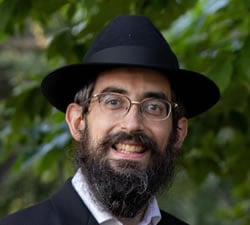|
Getting your Trinity Audio player ready...
|
A central element of the Passover Seder table is a child standing up proudly to ask the Four Questions, their face glowing with excitement. Beyond asking why “this night is different from all other nights,” these questions carry deep meaning and significance. Read on for 11 facts about this beloved highlight of the seder night.
1. They Launch the Haggadah
By the time we get to the Four Questions, we’ve already had the first cup of wine, dipped a vegetable in salt water, and broken the middle matzah. Now, it’s time to officially begin the Haggadah. We start by singing Hei Lachma Anya, inviting the poor to join our meal. Then comes the moment everyone has been waiting for: asking the Four Questions, also known as the Mah Nishtanah. The rest of the Haggadah is essentially an answer to these questions.
Read: What Is a Seder?
2. It’s the Base of the Seder Night
While many Jewish rituals focus on adults, Passover is all about the kids. The Haggadah follows a question-and-answer format, where the child asks and the parents respond. The Torah itself sets up this exchange:
“When your child asks you, ‘What is this?’ tell him, ‘With a strong hand, G‑d took us out of Egypt.’”1
Read: A Youthful Holiday
3. They Highlight How “This Night Is Different”
The child begins with the famous opening line: “Why is this night different from all other nights?” Then, they go on to list four key differences:
- On all other nights, we don’t need to dip even once. Tonight, we dip twice! (First, a vegetable in salt water, and later, maror in charoset.)
- On all other nights, we eat chametz (leavened bread) or matzah. Tonight, we eat only matzah!
- On all other nights, we eat all kinds of vegetables. Tonight, we eat maror (bitter herbs)!
- On all other nights, we eat sitting upright or reclining. Tonight, we all recline!
4. Some Have a Different Order
The order above follows the custom of Chabad and several other traditions, dating back to the earliest extant prayer books. Other Haggadahs, however, list matzah first, followed by maror, dipping, and reclining. That makes sense: matzah is a Biblical commandment, while maror is rabbinic and dipping is a custom. But why do many put dipping first?
This version highlights the importance of customs in Jewish life. While Biblical laws are crucial, it’s often the customs that catch a child’s eye. By enhancing the holiday with cherished traditions, we show our children that Judaism is precious and a cause for joy.2
5. There Used to Be a Different Question
Back in Temple times, the seder included the Paschal lamb, which had to be roasted.3 Because of this, children would ask a different question:
On all other nights, we eat meat that is roasted, boiled, or cooked. Tonight, we eat only roasted meat!4
Once the Temple was destroyed and the Paschal sacrifice was no longer brought, this question was no longer asked.
6. They’re Not Just in Hebrew
Many families encourage their children to ask the Four Questions in a language they understand. Some kids recite them in Hebrew first and then repeat them in English, Yiddish, Arabic, Spanish, Russian—or even Korean!
7. Kids Practice for Weeks
Instead of reading straight from the Haggadah, many children memorize the Four Questions in the weeks leading up to Passover. They practice again and again, perfecting their skill so that on the seder night they will truly shine!
Use our Mah Nishtanah Trainer
8. They Evoke G‑d’s Love
Hearing a child ask the Four Questions with innocence and charm is sure to melt a parent’s heart. But it does more than that: it stirs G‑d’s love for His children, the Jewish nation, similar to the Divine love expressed during the Exodus from Egypt.5
9. Adults Can Ask Them Too
No kids at your seder? No problem! Adults can—and should—ask the Four Questions, too, even if you are making a solo seder.6 In fact, some people whisper them quietly even when children are present.7 After all, whether you’re nine, nineteen, or ninety, every Jew is G‑d’s only child.
Take our Seder Quiz
10. There Are Layers of Meaning
There are many deeper ways of understanding the Four Questions. Some see them as explaining why the current “night” of exile is longer than all the previous ones our nation has endured.8 The Four Questions symbolize four reasons:
| Question | Cause of Lengthy Exile | Connection |
|---|---|---|
| Dipping | Indulgence in pleasures; decadence | We dip to enhance flavors, representing excessive luxury |
| Matzah | Discord; lack of Jewish unity | Related to a Hebrew word that can mean “fighting” |
| Maror | Pursuit of wealth | Money ultimately embitters those who chase it |
| Reclining | Arrogance | Reclining is a symbol of nobility and pride |
Read: Discover the Four Exiles
From a Kabbalistic perspective, the Four Questions correspond to the four spiritual worlds: Asiyah, Yetzirah, Briah, and Atzilut.9
Read: The Four Worlds
11. And Now … The Answers!
The questions have been asked—now it’s time for answers! The rest of the Haggadah tells the story of the Exodus and explains why we do what we do on this special night. So tell the story, sing the songs, and make it come alive. After all, the goal isn’t just to recite words—it’s to relive the Exodus and carry its lessons throughout the year.
Likkutei Sichot, vol. 1, pp. 244–245.
Exodus 12:8–9.
Pesachim 116a.
Haggadah shel Pesach im Likkutei Taamim U’Minhagim.
Code of Jewish Law, Orach Chaim 473:7.
Haggadah shel Pesach im Likkutei Taamim U’Minhagim.
Rabbi Shlomo Ephraim Luntschitz, Olelot Ephraim, Haggadah s.v. Mah Nishtanah. For another explanation, see Hayom Yom, entry for 19 Nissan.
Rabbi Chaim Vital in Pri Eitz Chaim, cited in Haggadah shel Pesach im Likkutei Taamim U’Minhagim.





